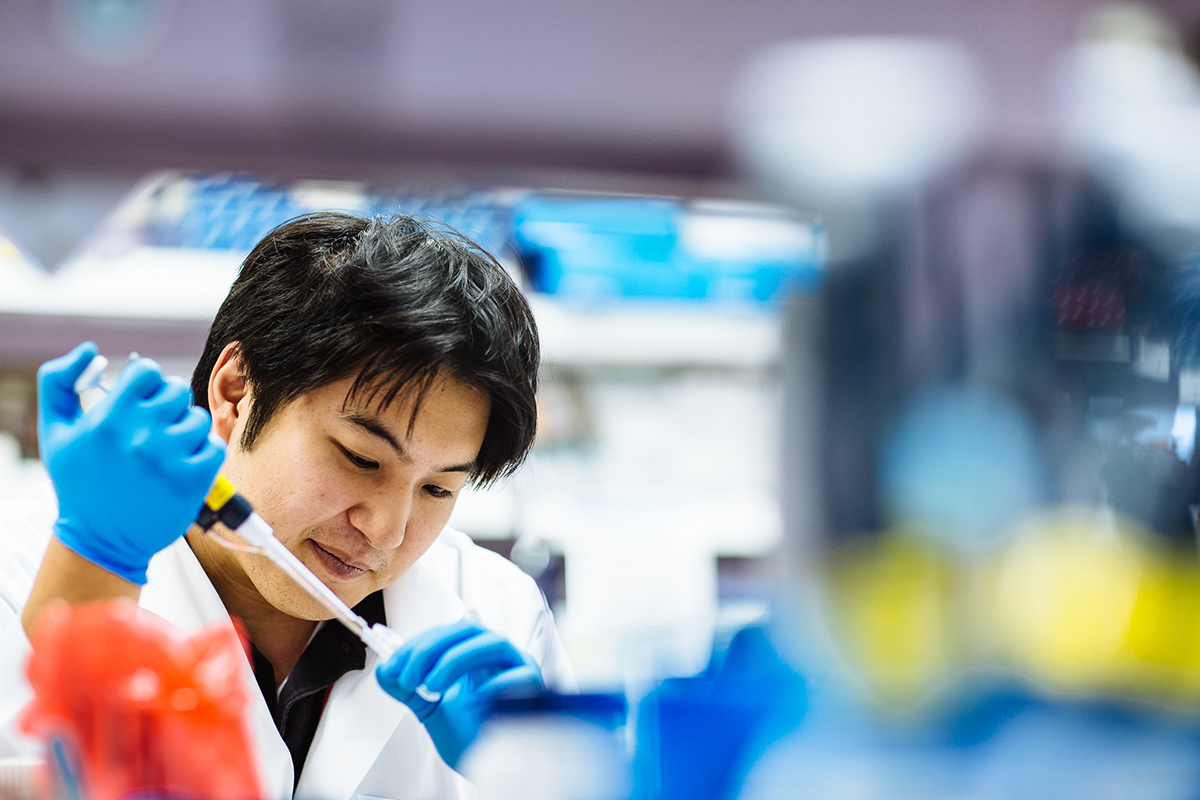Treatment
Pediatric Blood Transfusion
More than 2,700 patients receive blood transfusions each year at Children’s National Hospital and specialty care locations, including approximately 7,500 red blood cell(1), 2,000 plasma, 3,000 platelets(2), and 900 cryoprecipitate units.
The Blood Donor Center, located at the hospital, collects blood donations. Children’s National's nationally recognized pediatric transfusion medicine specialists then supervise the preparation of blood for transfusions.
Children who are transfused frequently, such as sickle cell disease patients, tend to develop antibodies(3) more often. This can make it very difficult to find compatible blood for the patient. Closely matching specific donor’s blood to the patient’s decreases the antibodies that frequently-transfused children develop.
Some patients’ families prefer to not receive a blood transfusion. Please speak with your doctor for guidance.
Frequently Asked Questions
Why are blood transfusions performed in children?
What makes up blood?
What are blood types?
What tests detect viruses in blood?
How are blood transfusions matched to a child's blood?
Are there risks in receiving a transfusion for a child?
What is done to reduce the risk of getting hepatitis from a transfusion?
Is there a risk of getting AIDS from a transfusion?
Are there alternatives to using blood?
Can parents and friends donate blood for a patient?
Can a child donate his or her blood prior to surgery?
Where are blood donations collected?
Do patients and families need to replace the blood used for a child?
Is there a charge for receiving blood?
Glossary of Terms
1 Red Blood Cell: A type of blood cell made in the bone marrow that carries oxygen to all parts of the body
2 Platelet: A component of the blood important in clotting. Inadequate amounts of platelets will lead to bleeding and bruising easily
3 Antibodies: Proteins produced by the body’s immune system which identify and help remove harmful substances or antigens such as viruses and bacteria
4 Leukemia: Any of a group of potentially fatal diseases involving uncontrolled growth of white blood cells. Leukemias are classified based upon rapidity of the course of the disease and the cell type affected
5 White Blood Cell: Also called a “leukocyte;” a type of blood cell produced by the bone marrow to help fight infection
6 Bone Marrow: The spongy center of bones that is the “factory” for all blood cells in circulation
7 Chemotherapy: Treatment for cancer using chemical substances designed to kill cancer cells. It is used in large doses to help destroy a patient’s diseased marrow in preparation for a marrow transplant
8 Harvesting: The procedure performed under anesthesia to remove bone marrow from the patient or a donor (bone marrow harvest); or the procedure to remove peripheral blood stem cells (PBSC harvest or pheresis)
9 Anemia: A decreased number or insufficient function of red blood cells which causes fatigue and paleness
View full glossary
Bone Marrow Transplant at Children's National Hospital
The Blood and Marrow Transplantation team is a nationally recognized leader in pediatric blood and marrow treatment advances and cutting-edge treatment protocols developed by physicians right here at Children’s National. Discover more about the treatments we offer.

Providers of Blood Transfusion
Departments that Offer Blood Transfusion

Histiocyte Disorders Program
Experts in the Histiocyte Disorders Program care for patients with a variety of rare conditions that happen when there are too many white blood cells in your child's blood.

Pathology and Laboratory Medicine
Whether your child needs a simple blood test or more advanced laboratory procedure, we understand it can be a frightening experience for a child and difficult for parents.

Comprehensive Hemostasis and Thrombosis Program
Our Comprehensive Hemostasis and Thrombosis Program treats children and teens with bleeding and platelet disorders, as well as clotting disorders and dangerous blood clots.









